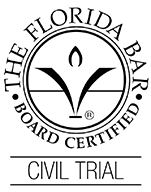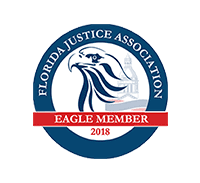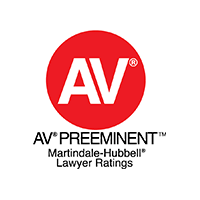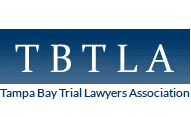Torts are in place to protect individuals against harm and help them get compensation for the harm that was inflicted upon them. It is important to clarify that this is only related to civil issues, not criminal issues, so there are a few differences when it comes to certain legal elements.
Burden of Proof
This is the first legal element that needs to be covered when it comes to the tort system. One needs to be able to prove that they were harmed, but the court does not need to consider the constitutional rights of the accused or be convinced that the defendant is guilty beyond a reasonable doubt. What happens on the civil level is that the plaintiff usually needs only to prove that there was more than a 50% chance they were the victim of wrongdoing, and to substantiate their claim.
The same evidence can be presented, such as expert witnesses or physical damage, but the intensity is not as high as it would be in a criminal trial with jurors deciding if someone is guilty or innocent. In the tort system, the plaintiff just needs to convince the judge or jury that the defendant was most likely in the wrong.
How Does the Tort System Work?
More is required than just gathering evidence and proving you are right and the defendant is wrong. To make the most of the tort system and have a stronger chance of winning your claim, you will want to be prepared with more knowledge.
- First, you must establish that the defendant had a duty to exercise caution to prevent causing harm to others.
- Then, you must show that the defendant failed to exercise caution in the situation at hand.
- Next, you have to prove that their failure to exercise the necessary caution led to you being injured, harmed, or damaged in some capacity.
- Finally, you must prove that you suffered losses as a result of your injuries.
Three Types of Torts
- Intentional Torts
Intentional torts occur when one party purposefully causes some form of harm to another. This covers everything ranging from assault and battery to trespassing and fraud. The perpetrator had actual intent to cause a person or entity harm, and, depending on the situation, may also face criminal charges for their actions.
This means that the government will prosecute the perpetrator for crimes they may have committed, while the plaintiff will be looking for some form of monetary compensation. This does not cover accidents, per se, so someone hitting your car or tripping and hitting you in the face is not considered an intentional tort.
- Negligence Torts
This is the meat and potatoes of the entire tort system. In negligence torts, there is no established contract between the parties at hand, so it typically comes down to one party failing to exercise reasonable caution in the given situation. Usually, the wrongdoer did not intend to cause harm to anyone but did so as a result of irresponsibility or a lack of awareness.
However, although causing harm to another was not the intention of the individual or entity, the damage was done. In some cases, the burden of proof can even be removed or reduced if it seems obvious there was negligence, as is referenced in the Latin theory of Res ipsa loquitur (the thing speaks for itself). This doctrine applies when it is evident that the defendant was in full control, that the injury would not have happened if not for the defendant’s negligence, and that the plaintiff did not bring the injury onto themself through their own actions.
Some examples of negligence are drunk driving, distracted driving, failure to notify guests/patrons of a wet floor or other danger on the property, or failure to keep up with necessary property maintenance. However, keep in mind that a person or entity can only be sued for negligent actions if their negligence resulted in harm to another person or entity.
The most infamous negligence tort in recent years may be the McDonald’s hot coffee incident: Liebeck v. McDonald’s. In this case, a woman ordered a cup of coffee from McDonald’s and was badly burned after spilling it on herself. Ordinarily, this would seem like the woman was at fault for her own injuries. However, it was determined that the coffee was served by McDonald’s at an unsafe temperature, rendering them responsible for injuries she suffered as a result of the spill. McDonald’s wasn’t intentionally trying to harm the plaintiff but, through negligence, ended up causing harm and injury.
- Strict Liability Torts
In these cases, there is even less of a burden of proof due to the fact that they are usually associated with a particular item or action. The only proof the plaintiff needs to provide is that the item or action in question directly caused their injuries.
A classic example of a strict liability tort is a defective product that could potentially burn you. If you can show the burn marks or medical bills associated with the burn, and it was documented by the doctor that it was caused by the product, then you don’t have to go through the stages of establishing that the company was the responsible party and broke their duty to you. It doesn’t matter if the company has done everything beforehand or afterward to try to remove their defective product. The damage was caused in that time period and thus there is a tort in place to cover it, and compensation can be demanded.
Another example in this scenario is animal attacks, where the bite marks from a dog are enough evidence to prove strict liability and compensation can then be determined.
Torts Offer a Way to Fair Compensation
In the end, the tort system provides an effective way to hold responsible parties accountable for their actions and to enable victims to seek compensation. Remember, the tort system is not limited to small matters between individuals. Businesses and corporations are, if anything, held to an even higher duty of care than individuals, and are subject to liability for any injuries resulting from their products, property, actions, or lack thereof.
The tort system allows a separation of criminal and civil cases so that even if a party’s actions do not warrant criminal charges, they can be held responsible for any harm their actions may have caused.
For more information about torts and to get legal assistance in Florida, contact Dismuke Law now.
Continued Reading
- Source: US Chamber of Commerce tort breakdown 2016.
- This link shows the actual breakdown of how much the average injured party ends up getting through a claim and what is consumed by the legal system through fees. Based on this data, there were around $429 billion in damages owed to plaintiffs in 2016 alone.
- Source: US Chamber of Commerce Tort Breakdown 2016
- This link shows that most of the costs and compensation come from torts filed against corporations and companies, and very little comes from individual defendants.

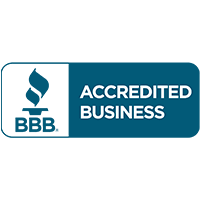
![cftla-member[2]](https://www.1800askdave.com/wp-content/uploads/2022/03/cftla-member2.png)
![cftla-member[3]](https://www.1800askdave.com/wp-content/uploads/2022/03/cftla-member3.png)

